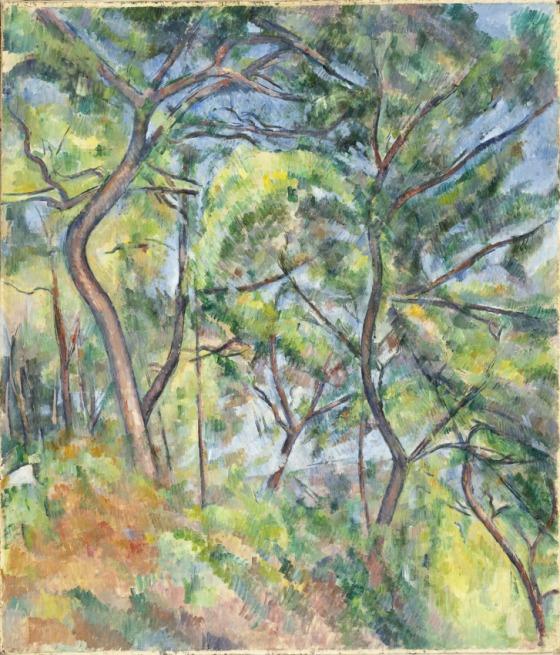Paul Cézanne, one of the most important French artists of the 19th century, painted this landscape in a more mature period of his career, sometime between 1882 and 1894. The title, Sous-Bois, does not have a direct English parallel, however, it loosely translates to "under the trees.” Cézanne was known for his classical landscapes characterized by his strategy of layering on thick patches of paint, giving his final canvases an almost geometric appearance.
Sous-Bois offers something completely different from Cézanne's oeuvre. Featuring a zigzag of trees, branches, and leaves, the painting also showcases details that are not often found in Impressionist paintings. Indeed it appears as though each leaf is represented by each explosive stroke of the artist's paintbrush. A sense of structure, order, form, and shape is present, but the articulation in the execution is much freer than that seen in Cézanne’s other paintings.
The artist loved the hot, dry landscape of Aix-en-Provence in southern France. He once wrote, “Were it not that I am deeply in love with the landscape of my country, I should not be here.”
Sous-Bois is currently on view on the third floor of the Ahmanson Building. Check out LACMA's Collections Online to download high-res images of this work.
This year marks LACMA's 50th anniversary. We're celebrating all that we've done while looking forward to what's in store for us in the next 50. Check back every week on Unframed to find a highlight of an artwork from LACMA's collection, which features over 120,000 objects that span time, the globe, and all cultures. This is 22/50 of the series.



